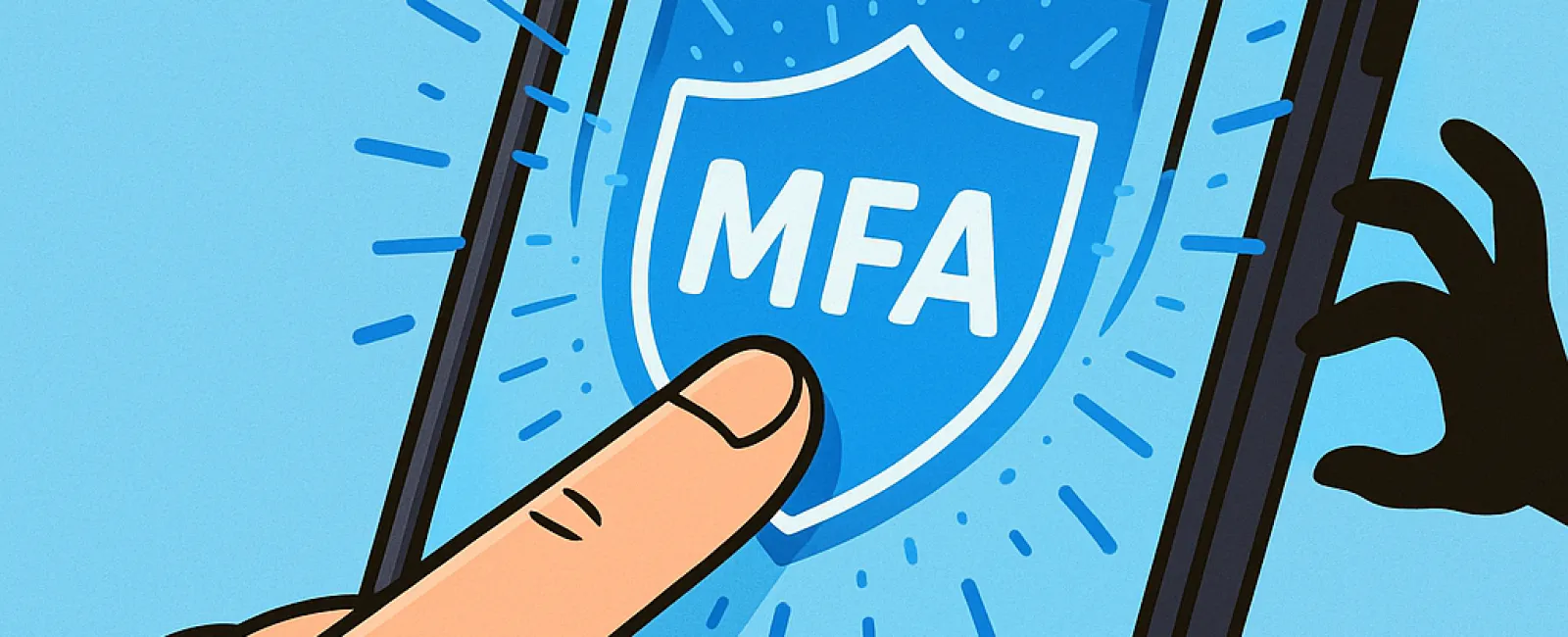October 27, 2025
Just as you wouldn't get behind the wheel without buckling your seatbelt or leave your office doors unlocked overnight, you shouldn't go online without activating multifactor authentication (MFA). It's a critical line of defense to protect your digital life.
MFA acts like a second security barrier on your digital entryway. Instead of relying solely on a password—which can be stolen, guessed, or phished—it adds an additional level of verification, such as a text message code, an authentication app prompt, or a fingerprint scan. Even if hackers manage to obtain your password, without this extra authentication step, they're locked out.
Simple Extra Step, Major Security Impact
Think of your password as locking your front door, and MFA as activating a home alarm system before bed. While it might not be absolutely required, having this additional safeguard gives you peace of mind if one measure falters.
That's precisely why MFA matters—it adds a fast, additional verification step to confirm that it's truly you logging in. Known by several names—like "two-step verification," "two-factor authentication," or "one-time password"—MFA always means this: two or more layers of identity verification before access is granted.
MFA comes in many forms: confirmation emails during account setup, security questions from banks, text codes, push notifications, or phone calls. The vast majority involve just a quick tap or code input, making security effortless.
How MFA Protects You in Real Situations
For users, MFA is a simple extra step—just enter a code or tap a button. But for cybercriminals, it's a major roadblock. When someone attempts unauthorized access, MFA sends you a notification or requires a code, alerting you to suspicious activity immediately. This early warning allows you to secure your account by updating your password before any data is compromised.
Additionally, MFA blocks access attempts even when a hacker has your password. If an employee is tricked into sharing login details, the attacker still cannot get in without passing the MFA verification. In fact, Microsoft reports that enabling MFA reduces account compromise risks by over 99.2%, and up to 99.99% for those accounts with MFA activated.
Essential Accounts to Secure with MFA—and How to Do It
Make sure to enable MFA on key accounts such as:
- Banking and financial applications
- Email platforms and cloud storage
- Social media profiles
- Work-related systems with client or proprietary data
Setting up MFA is usually straightforward. Many leading services offer built-in options—simply choose the method that suits you best and integrate it into your daily routine. Using an authenticator app can significantly strengthen employee login security.
In summary, MFA is a fast, free, and highly effective way to block the vast majority of account breaches. Investing just a few minutes now to enable it can save you from extensive damage control and data loss in the future.
The easiest way to get started with MFA is to reach out to your IT provider. A skilled managed service provider (MSP) will help streamline the setup process. If you're looking for expert cybersecurity assistance, click here or call us at 281-367-8253 to schedule your 15-Minute Discovery Call consultation with our team today.




